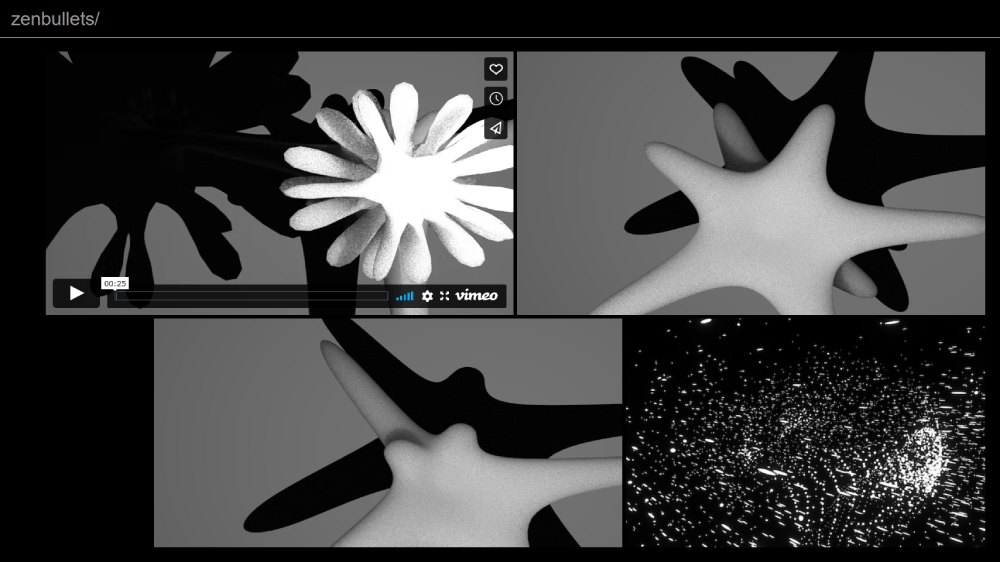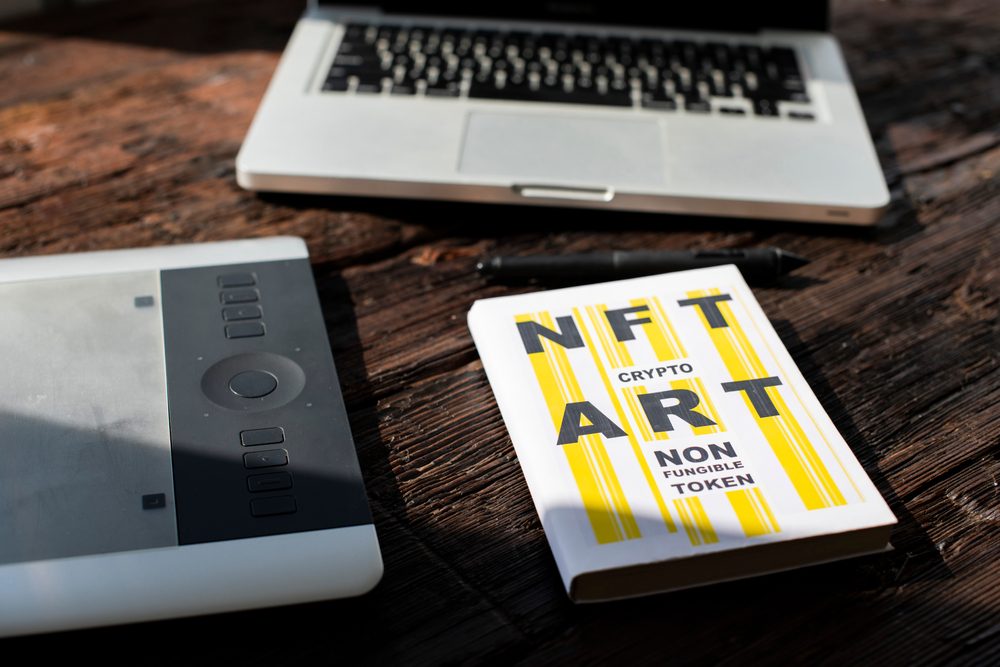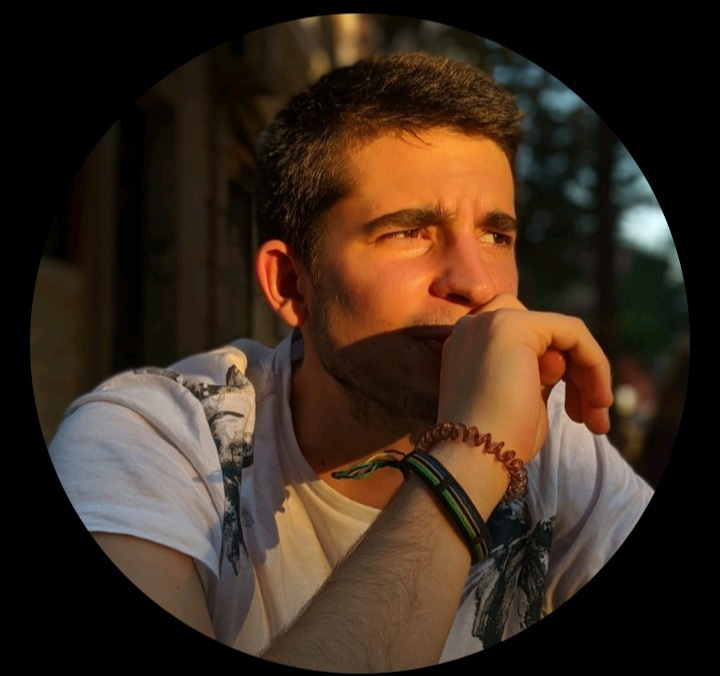Discover the seven best generative art books to help you start your own generative art NFT collection.
Digital artists have used machine learning and algorithms in a process known as Generative Art to create some of the most successful NFT projects on the market, including the CryptoPunks and Bored Ape Yacht Club (BAYC).
If you aren’t already familiar with generative art, then you can always read our article ‘What Is Generative Art? Where Algorithms Meet Art’. While reading our guide will get you up-to-date on this futuristic form of digital art, opening a book is your best bet if you truly want to understand the field.
This article will provide you with a list of the top seven books on generative art and explain why these books are so highly recommended for anyone interested in creating generative art NFT collections.
Table of Contents
1. Generative Art: A Practical Guide Using Processing by Matt Pearson

Matt Pearson is a digital artist and coder who has won multiple awards for his ZenBullets.com art blog, and he is one of the main designers on the 100 Abandoned Artworks Generative Art project.
Pearson has accumulated a vast knowledge of the Generative art process, and his Practical Guide to the technique successfully codified his knowledge when it was published in 2011 by the Manning publishing house.
Pearson’s book is highly-rated on Amazon, where users have written reviews praising its structure and detail, and it’s currently ranked among the top 100 best-selling digital art titles.
The book starts by providing the reader with a detailed insight into the theory and practices behind generative art before moving into more technical areas, where Pearson explains the processes behind coding your own generative art designs.
As a result of the guide’s in-depth tutorial style descriptions and helpful illustrations, it’s the perfect read for anyone looking to improve their generative art skills. And, who knows, it might even help you create the next million-dollar NFT collection.
You can purchase this book on Amazon.
[amazon box=”1935182625″]
2. Code as Creative Medium: A Handbook for Computational Art and Design by Golan Levin and Tega Brain
Golan Levin is an Associate Professor of Electronic Art at Carnegie Mellon University (CMU) with over three decades of experience in the computer science and visual code space. His work earned him a place on the “50 Designers Shaping the Future” list created by Fast Company magazine.
Tega Brain is an Assistant Professor of Integrated Digital Media at New York University whose work has been displayed worldwide, from the Guangzhou Triennial in China to the New Museum in New York City.
Code as Creative Medium was published in 2021 by the MIT Press and quickly became an essential guide for students and teachers of computational art as it amassed dozens of positive reviews from industry experts.
John Maeda, author of How to Speak Machine, wrote, “This handbook represents a landmark task in updating centuries of traditional art practice to this very moment when we can choose to either create with the machine or just get left behind.”
The book has over 170 illustrations along with a detailed guide for computer science students transitioning into the artistic fields. Creative and clear-to-follow coding prompts are reinforced with assignments and annotated examples that should help you get to grips with even the more complex coding systems.
If you’re serious about Generative Art and the use of code to create visual projects, then Code as Creative Medium should be at the top of your reading list.
You can purchase this book on Amazon.
[amazon box=”0262542048″]
3. Coding Art: The Four Steps to Creative Programming with the Processing Language (Design Thinking) by Yu Zhang and Mathias Funk
Yu Zhang is a Ph.D. artist whose career has seen her focus on interactive technologies in the digital art space. Her work often leverages cutting-edge tool kits to bridge the gap between the digital and the physical by presenting her audience with auditory and interactive displays.
Mathias Funk is an Associate Professor at the Industrial Design department of the Eindhoven University of Technology, where his research focuses on complex system design technology and integrated development. Funk also has extensive experience in information visualization methods and coding.
Coding Art was published in 2021 by the Apress publishing house; its target audience is designers and digital artists looking to expand their knowledge of creative programming.
Zhang and Funk have curated the book with artists in mind, avoiding complex jargon and getting straight to the point through an easy-to-follow four-step programming process.
M Sasikumar from ComputingReviews.com described the book as “very readable” and added that “language-wise also there will be little difficulty in following the discussion. Full program code is given for almost all that is discussed in the book; one can just type it into Processing and see what it does.”
Coding Art is an excellent place for creatives to get to grips with the code behind generative art, especially if they don’t have a degree in computer science or a background in coding.
You can purchase this book on Amazon.
[amazon box=”1484262638″]
4. Generative Design: Visualize, Program, and Create with JavaScript by Benedikt Groß, Hartmut Bohnacker
Benedikt Groß is a professor of Strategic and Interaction Design at HfG Schwabisch Gmund. He has experience as a design director, processor, and data visualization consultant, and his projects have been showcased at exhibitions worldwide.
Hartmut Bohnacker is also a professor of design at Schwabisch Gmund and focuses on the development of interfaces and interactions.
Generative Design was published in 2018 by the Princeton Architectural Press and quickly gained traction among designers looking to develop their JavaScript skills. The book is ranked in the top 50 in Amazon’s Design section and the top 30 for JacaScript Programming.
This dedicated guide to coding art in the JavaScript language is ideal for designers looking to use Java to create infographics, digital artwork, and 3D graphics.
The book is filled with step-by-step guides that explore different typography, shapes, and forms, providing the reader with a wide range of JavaScript design techniques.
Generative Design has just under 200 independent reviews on the BookDepository with an average rating of 4.5/5 stars. So, if you’re looking to create Generative Art using JavaScript, you should consider picking up a copy of this book.
You can purchase this book on Amazon.
[amazon box=”B07K4XNMR7″]
5. Generative Art: Algorithms as Artistic Tool by James. R. Parker
Dr. James R. Parker is a mathematician and computer scientist who contributed to world-leading research in computer simulation, artificial intelligence, and generative art. His expertise earned him the role of Professor of Art at the University of Calgary, where he taught numerous courses related to generative art and coding.
Parker’s book was published in 2019 by the UpRoute publishing house, and alongside the physical book, the website www.genart.ca also went live, allowing users to see the code in the book in action.
Although the book has received some solid independent reviews on Amazon and GoodReads, along with praise from University Professors in the computer science space, it hasn’t broken into the top 100 of any of Amazon’s relevant categories.
The absence of the title from the best sellers lists is probably a result of its target audience, which is people who already have a solid foundation in coding.
As a result, if you’re a beginner in generative art coding, then this one isn’t for you, but if you already know how to code, then this book will help you build on your generative art coding skills.
You can purchase this book on Amazon.
[amazon box=”1988824389″]
6. Make Your Own Algorithmic Art by Tariq Rashid
Tariq Rashid is a former data scientist and machine learning enthusiast. He founded the UK-based Algorithmic Art meetup, where thousands of digital artists and computer scientists meet to network and show off their projects.
Make Your Own Algorithmic Art was published in 2018 and provides its readers with an easy-to-follow introduction to creative coding. It has received dozens of positive reviews on Amazon and GoodReads, especially from self-described generative art rookies.
The book takes the reader on a journey, starting with the basic ideas of computer-generated visualization into the code behind the images before diving into best practice coding methods and how you can personally leverage them to create art.
Rashid’s book is ideal for artists new to coding and computer scientists looking to explore their creative side.
You can purchase this book on Amazon.
[amazon box=”B07BP13VPR”]
7. Creating Procedural Artworks with Processing: A Holistic Guide by Penny de Byl
Penny de Byl is a computer game development and design professor with extensive experience in artificial intelligence and animation. She has a Ph.D. in AI and character design and has published nearly a dozen books relating to coding and design.
Creating Procedural Artworks was published in 2017; the book’s ten chapters offer detailed explanations of the different computer-based art generation process and contains a handy self-assessment section.
The book is written for complete beginners looking to learn how to use coding to create works of art. Readers will be guided through the coding process, and they’ll be able to put what they’ve learned into motion at www.proccessing.org.
The title hasn’t made it into Amazon’s best-seller lists, but it has received several extremely positive independent reviews on several sites.
If you have no experience with coding but want to get into creating generative art NFTs, then this book is a great place to start.
You can purchase this book on Amazon.
[amazon box=”B071JTLYL4″]
Final Thoughts On The Best Generative Art Books For NFT Creators
It’s hard to imagine a more exciting time to be a digital artist or a coder with a creative flair; thanks to advanced algorithms and the NFT revolution, you have the opportunity to create vast collections of art that with both semantic and potentially financial value. While reading articles and watching videos can help you become a better generative art coder to level-up your understanding picking up a book is the best move, and all the books in this article will help you in your endeavor.


